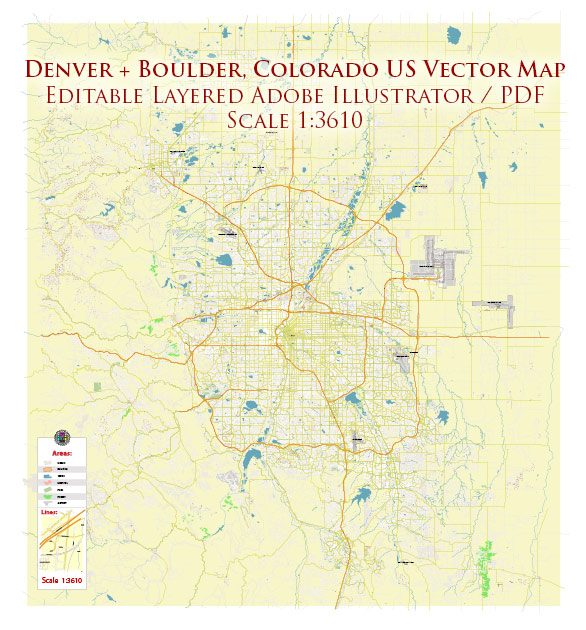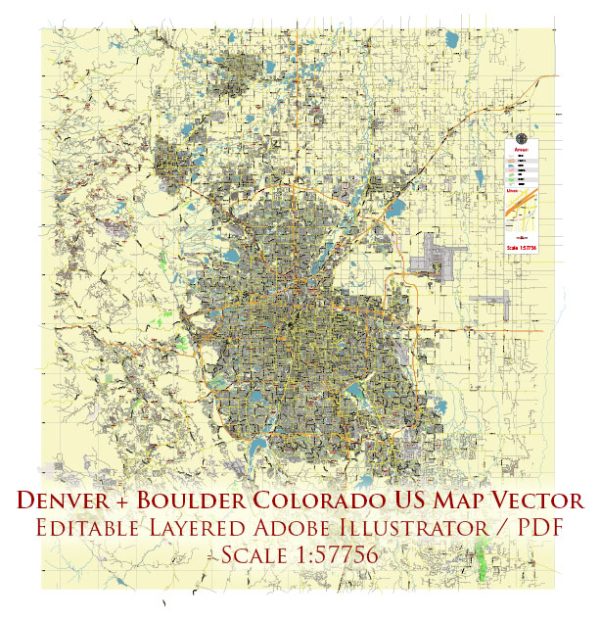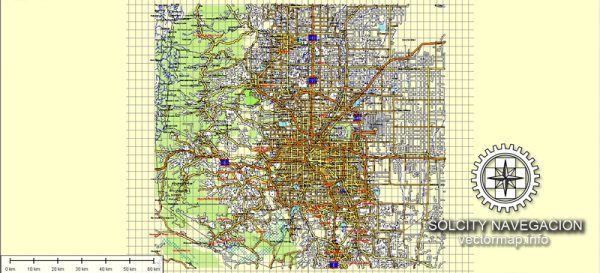The urban development history of Denver and Boulder, Colorado, reflects the broader trends in American urbanization, with unique characteristics shaped by local geography, economy, and culture. Here’s an overview of the historical development of these two cities:
Denver:
Early Settlement and Boom:
- Denver’s history dates back to the 1858 Pikes Peak Gold Rush, which led to a rapid influx of settlers to the region.
- The city was founded in 1859 and quickly became a supply hub for miners seeking their fortunes in the nearby mountains.
- Denver’s early growth was closely tied to mining, and it served as a gateway to the rich resources of the Rocky Mountains.
Railroads and Economic Growth:
- The arrival of the railroad in the 1870s further accelerated Denver’s growth, making it a major transportation hub.
- The city’s economy diversified with the growth of agriculture, manufacturing, and services, cementing its status as the “Queen City of the Plains.”
20th Century Development:
- In the early 20th century, Denver continued to grow, and its skyline started to change with the construction of tall buildings.
- The city’s economy expanded with the rise of the oil and gas industry and the establishment of government offices and military installations during World War II.
Post-War Suburbanization:
- Like many American cities, Denver experienced suburbanization in the post-war period, with residents moving to the outskirts for a suburban lifestyle.
- The construction of interstate highways facilitated this trend and changed the dynamics of the metropolitan area.
Downtown Revitalization and Cultural Scene:
- In recent decades, Denver has seen a revitalization of its downtown area, with new developments, cultural institutions, and a thriving arts scene.
- The expansion of light rail and public transportation has played a role in shaping the city’s urban fabric.
Boulder:
Early Settlement and Agricultural Roots:
- Boulder was initially settled in the 1850s, primarily as a supply center for miners in the nearby mountains.
- Agriculture, especially fruit orchards, played a significant role in the early economy of Boulder.
Educational and Cultural Hub:
- The founding of the University of Colorado in 1876 had a transformative effect on Boulder, making it an educational and cultural center.
- The city’s growth was influenced by the university, attracting students, faculty, and professionals.
20th Century Growth and Open Space Movement:
- Boulder experienced steady growth throughout the 20th century, but in the 1960s and 1970s, the city gained national attention for its commitment to preserving open space.
- The Open Space Movement aimed to limit urban sprawl and protect the natural beauty of the surrounding area.
High-Tech and Innovation Hub:
- In recent decades, Boulder has become known for its high-tech industry and innovation, with a focus on technology, aerospace, and research.
- The city’s growth has been managed to preserve its quality of life and unique character, with an emphasis on sustainable development.
Both Denver and Boulder continue to evolve, balancing the preservation of their historical roots with the demands of modern urban living. The interplay of natural beauty, economic factors, and cultural initiatives has shaped these cities into vibrant centers with unique identities within the broader context of American urban development.




 Author: Kirill Shrayber, Ph.D.
Author: Kirill Shrayber, Ph.D.